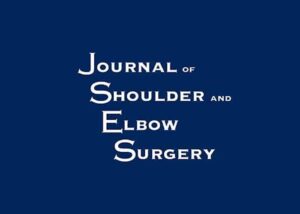
Authors:
John M Tokish, John E Kuhn, Gregory D Ayers, Robert A Arciero, Robert T Burks, David M Dines, Xavier A Duralde, Neal S ElAttrache, Peter J Millett, Patrick St Pierre, Matthew T Provencher, James E Tibone, Jonathan B Ticker, Frank A Cordasco
Abstract:
Background: The treatment of patients who sustain a first-time anterior glenohumeral dislocation (FTAGD) is controversial. The purpose of this study was to find consensus among experts using a validated iterative process in the treatment of patients after an FTAGD.
Methods: The Neer Circle is an organization of shoulder experts recognized for their service to the American Shoulder and Elbow Surgeons. Consensus among 72 identified experts from this group was sought with a series of surveys using the Delphi process. The first survey used open-ended questions designed to identify patient-related features that influence treatment decisions after an FTAGD. The second survey used a Likert scale to rank each feature’s impact on treatment decisions. The third survey used highly impactful features to construct 162 clinical scenarios. For each scenario, experts recommended surgery or not and reported how strongly they made their recommendation. These data were analyzed to find clinical scenarios that had >90% consensus for recommending treatment. These data were also used in univariate and multivariate mixed-effects models to identify odds ratios (ORs) for different features and to assess how combining these features influenced the probability of surgery for specific populations.
Results: Of the 162 scenarios, 8 (5%) achieved >90% consensus for recommending surgery. All of these scenarios treated athletes with meaningful bone loss at the end of their season. In particular, for contact athletes aged > 14 years who were at the end of the season and had apprehension and meaningful bone loss, there was >90% consensus for recommending surgery after an FTAGD, with surgeons feeling very strongly about this recommendation. Of the scenarios, 22 (14%) reached >90% consensus for recommending nonoperative treatment. All of these scenarios lacked meaningful bone loss. In particular, surgeons felt very strongly about recommending nonoperative treatment after an FTAGD for non-athletes lacking apprehension without meaningful bone loss. The presence of meaningful bone loss (OR, 6.85; 95% confidence interval, 6.24-7.52) and apprehension (OR, 5.60; 95% confidence interval, 5.03-6.25) were the strongest predictors of surgery. When these 2 features were combined, profound effects increasing the probability of surgery for different populations (active-duty military, non-athletes, noncontact athletes, and contact athletes) were noted, particularly non-athletes.
Conclusion: Consensus for recommending treatment of the FTAGD patient was not easily achieved. Certain combinations of patient-specific factors, such as the presence of meaningful bone loss and apprehension, increased the probability of surgery after an FTAGD in all populations. Over 90% of shoulder instability experts recommend surgery after an FTAGD for contact athletes aged > 14 years at the end of the season with both apprehension and meaningful bone loss. Over 90% of experts would not perform surgery after a first dislocation in patients who are not athletes and who lack apprehension without meaningful bone loss.
For the complete study: Decision making in treatment after a first-time anterior glenohumeral dislocation: A Delphi approach by the Neer Circle of the American Shoulder and Elbow Surgeons